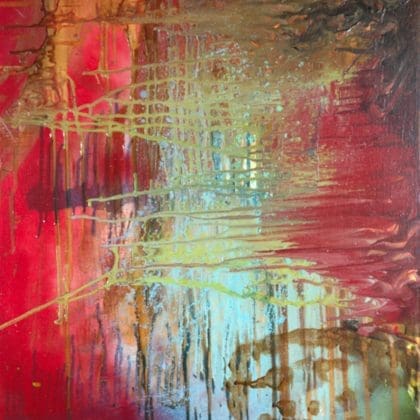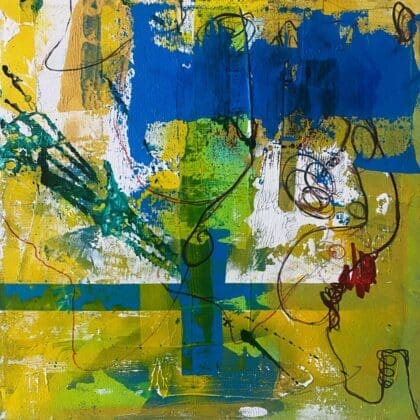As a collector, the value of the art you acquire can often feel elusive. While you may be drawn to a piece for its beauty or emotional resonance, understanding what drives art valuation can empower you to make informed purchasing decisions and build a more valuable collection. Art valuation is influenced by a myriad of factors, from the artist’s reputation to market trends, and being aware of these drivers can help you navigate the art market more effectively.
In this article, we’ll explore the key drivers behind art valuation, providing you with insights that will enhance your collecting journey.
1. Artist Reputation and Recognition
One of the most significant factors influencing art valuation is the reputation of the artist. Established artists with a strong following and critical acclaim typically command higher prices for their works.
Key considerations:
Artistic Influence: Artists who have made substantial contributions to the art world, whether through innovative techniques or cultural movements, tend to see their work valued more highly.
Market Demand: Pieces from artists currently in demand, often due to recent exhibitions or media attention, will have inflated prices.
Awards and Honors: Recognition from reputable art organizations or awards can significantly boost an artist’s status and the value of their work.
2. Rarity and Scarcity
The availability of a piece plays a crucial role in its valuation. Rarer artworks, particularly those from sought-after artists or limited editions, tend to have higher market value.
Factors affecting rarity:
Limited Editions: Works produced in small quantities, such as limited edition prints or sculptures, are often more valuable due to their scarcity.
Unique Works: One-of-a-kind pieces or original artworks will generally command higher prices compared to mass-produced items.
Historical Significance: Artworks with unique historical backgrounds or those associated with significant events can also be considered rare, further enhancing their value.
3. Condition and Quality of the Artwork
The physical condition of an artwork greatly affects its value. Collectors should assess the quality and condition before making a purchase.
Condition considerations:
Maintenance and Restoration: Well-maintained artworks that have not undergone significant restoration are usually valued higher. Extensive restoration can raise questions about authenticity and reduce value.
Medium and Materials: The choice of materials and techniques used by the artist can also influence valuation. High-quality materials often indicate greater durability and desirability.
Aesthetic Appeal: The overall aesthetic quality of the work—how well it is composed, executed, and visually engaging—can impact its market perception and value.
4. Provenance and Ownership History
As discussed in a previous article, provenance refers to the documented history of an artwork’s ownership. A well-established provenance can enhance a piece’s value.
Provenance factors:
Previous Owners: Works that have been owned by notable collectors, galleries, or institutions typically have higher valuations due to their perceived prestige.
Exhibition History: Artworks that have been exhibited in prominent galleries or museums may be valued higher, reflecting their cultural significance and recognition in the art community.
Documentation: Clear and complete provenance can help confirm authenticity and enhance value.
5. Market Trends and Economic Factors
Art valuation is also influenced by broader market trends and economic conditions. Being aware of these factors can help you understand the fluctuations in art prices.
Economic considerations:
Market Demand: The overall demand for art, influenced by cultural trends and economic conditions, can drive prices up or down. High demand for specific styles or artists can lead to inflated valuations.
Global Economic Factors: Economic downturns or booms can impact disposable income and spending habits, which in turn affects art sales and valuations.
Investment Trends: Increasing interest in art as an investment can drive prices higher, particularly for works perceived as safe investments.
6. Cultural and Social Factors
The cultural context in which an artwork is created and perceived can also influence its valuation. Art that resonates with current social or cultural movements may see increased value.
Cultural drivers:
Cultural Relevance: Works that speak to contemporary issues or reflect societal changes often gain traction and value in the market.
Artistic Movements: The popularity of specific artistic movements can influence valuation. For example, works from movements like street art or socially engaged art may gain traction as their relevance in culture grows.
Collective Trends: Changes in collector preferences and tastes can impact which artists or styles are in demand, thus affecting valuation.
Conclusion: Take Charge of Your Collecting Journey
Understanding the drivers behind art valuation empowers you to make informed decisions as a collector. By considering factors such as artist reputation, rarity, condition, provenance, market trends, and cultural relevance, you can enhance the value of your collection and ensure that your purchases are sound investments.
Now it’s your turn: Take a moment to evaluate your current collection through the lens of these drivers. Are there pieces that may benefit from better documentation of provenance? Are you considering works by emerging artists that could become valuable in the future? Engage with the art community, attend exhibitions, and keep abreast of market trends to continuously educate yourself. By taking these steps, you will not only enrich your art collection but also enhance your overall experience as a passionate collector.




